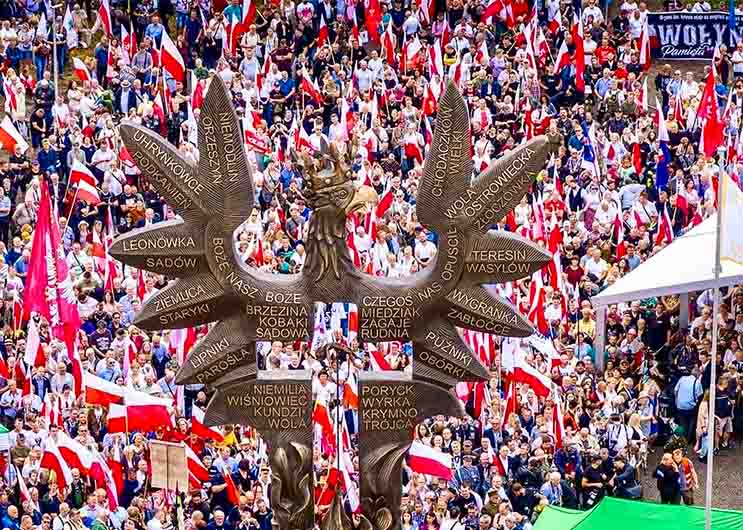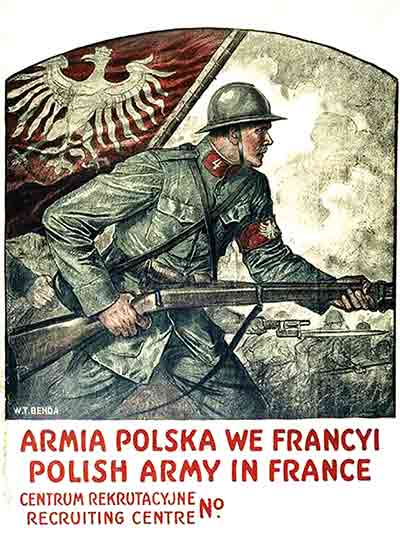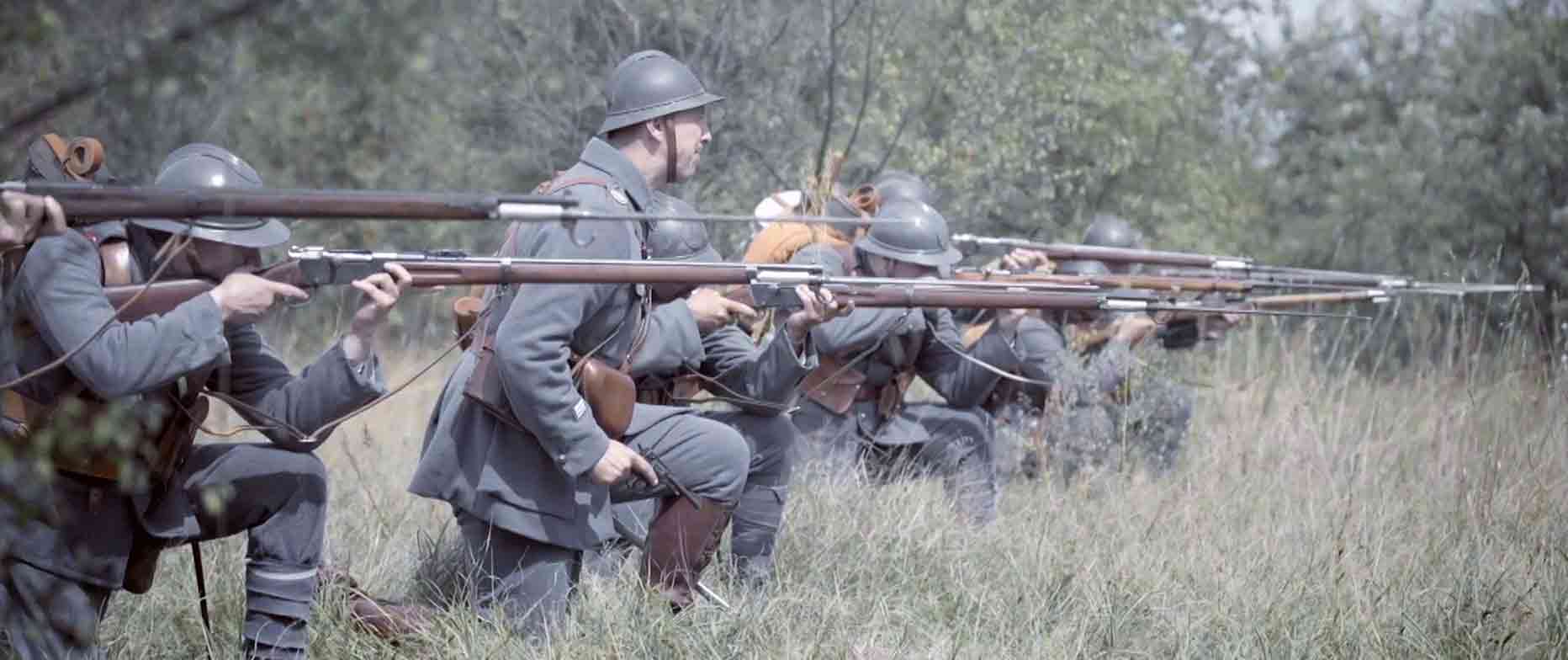Wołyń-Zhytomyr is close to the heart of every Pole. In these areas and on the Poles living here, the history of the nineteenth and twentieth centuries has left its mark of suffering. The following great sons of our nation were related to Żytomierz: Józef Conrad Korzeniowski, Jarosław Dąbrowski, Józef Ignacy Kraszewski, Juliusz Zarębski, Ignacy Jan Paderewski, and others.
The Poles of Zhytomyr fought for the independence of their homeland, took part in freedom uprisings, and fought in the Polish-Bolshevik war, which ended with the Treaty of Riga. It established the boundaries between the Republic of Poland and the Russian Soviet Federative Socialist Republic and the Ukrainian Soviet Socialist Republic. Zhytomyr became part of the USSR.
In Soviet times, Poles in the USSR experienced many repressions. The Bolsheviks tried to destroy the Polish identity, faith, history and memory of the nation. The Soviet authorities destroyed Polish cemeteries, monuments, and military graves, and threatened with repressions. Risking their lives, Poles passed down Polish culture and traditions, historical truths about battles and mass graves of Polish soldiers from generation to generation.
I heard stories about Polish soldiers who died in the Żytomierz region in the late 1980s from my grandmother and mother - Wanda Laskowska, so we tried to find the places of fights and graves of Polish soldiers in the Żytomierszczyzna, to surround them with due respect and dignity.
Polish-Ukrainian Brotherhood In Arms
Mass graves are one of the many symbols of the Polish-Ukrainian brotherhood in arms. Unfortunately, so few people in Poland and Ukraine know about them. The Żytomierz Oblast Union of Poles in Ukraine (Związek Polaków na Ukrainie, ZPU), together with the Korosten ZPU, made an effort to properly celebrate the 100th anniversary of the Polish-Bolshevik war.
In 1920, the Red Army kept pushing forward, not only depriving the government of the Ukrainian People's Republic of its own territory, but, in the long run, threatening the independence of the young Polish state. The leaders of both nations, Józef Piłsudski and Symon Petliura, understood the situation very well.
Józef Piłsudski decided to conduct an operation against the Bolsheviks. Its military goal was to deliver a pre-emptive blow to the Red Army and to reach the line of the Dnieper River, where the units of the Ukrainian People's Republic (UPR) were to take over. The political goal was to seize Kiev - the capital of Ukraine and install the UPR government in it, and to create an Ukrainian army that would be able to take over the responsibility for the country from the Polish troops.
In accordance with Piłsudski's order, on April 25, 1920, the so-called Kiev expedition began. Polish and Ukrainian soldiers fought together. On the first day of the operation, Owrucz was liberated, and on the second day, Żytomierz, Korosteń and Radomyśl. On April 27, Berdyczów, Koziatyn, Winnica, Bar and Żmerynka were captured, and on May 7 - Kiev. On May 9, a joint parade of the victorious Polish-Ukrainian units took place in Chreszczatyn. The Bolshevik army fled in disarray.
It seemed that the Polish-Ukrainian alliance would become the foundation of a new political order in Central and Eastern Europe, based on the co-operation of two independent states with significant population and economic potential and a very important geographic location. Marshal Piłsudski understood perfectly its meaning, and during a meeting in Vinnitsa with Ataman Petlura on May 16, 1920, said: “I will be happy when it is not me - a small servant of my nation - but representatives of the Polish and Ukrainian Seyms [parliaments, -ed.] that establish a common platform of understanding. On behalf of Poland, I shout: Long live a free Ukraine."
On May 14, the Soviet offensive began in Belarus, with the forces of the Western Front still not fully concentrated. On May 15-24, clashes between Red Army units and the forces of the UPR took place in the villages of Ketrosy, Pidlisivka and Hruszka. On June 7-10, the Red Army soldiers seized Berdyczów, Żytomierz, Biała Cerkiew, Fastów, Vasylkiv, Gostomil and Chernobyl. On June 12, the 3rd Polish Army left Kiev.
About 100,000 people died, perished, and were killed in the fighting from November 1918 to the end of 1920 to consolidate Poland's independence and borders [1]. They were buried in Polish cemeteries, near churches or in the fields, on the sites of the battles. Burials were often held secretly, and the burying of the bodies of the fallen on the battlefield was at a cost of great heroism.
The communist authorities undertook a number of activities aimed at destroying the graves and symbols of national memory. Information about the resting places of war heroes was passed down from generation to generation at the risk to their lives. It is a duty to those who gave their lives for freedom for us to remember them. The public managed to defend the monuments, but at the cost of the fact that many graves did not even have a cross, no mass was celebrated, and no one prayed.
ŻOZPU (Żytomierski Obwodowy Związek Polaków na Ukrainie, Zhytomyr District Union of Poles in Ukraine) activists decided to restore a dignified appearance to the resting places of soldiers. Based on the memoirs of the oldest inhabitants of the Żytomierz region and the book by Eugeniusz Jabłoński "Wzlot" (eng. The Rise, Warsaw 2004), where he listed the villages of Rudnia Baranowska and Nowy Dorohin as those with the graves of the fallen, the search has begun.
The president of the Korosten Union of Poles in Ukraine, Wanda Laskowska, found witnesses who confirmed the presence of the graves. Responsible and painstaking work was carried out to find the places of burials, to draw up lists of missing persons and to obtain appropriate permits. Activists of ŻOZPU traveled to the area many times, cleaned up the graves, while the chaplain, Fr. Jarosław Giżycki prayed over the graves.
On the occasion of the 100th anniversary of the Polish-Bolshevik war, Poles from the Zhytomyr region commemorated the Polish and Ukrainian soldiers who died for the freedom of Poland and Ukraine in 1920. On forgotten graves in the Żytomierz region, candles were lit in Żytomierz, Korosten, Rudnia Baranowska, and Nowy Dorohin, among others.
Zhytomyr
In the Polish Cemetery, thanks to the efforts of the Zhytomyr District Union of Poles in Ukraine, a cross was erected on the grave of 33 Polish soldiers who were shot in Zhytomyr. The second grave of Polish soldiers was indicated by the late Franciszek Brzezicki. White and red candles were lit on it, wreaths were laid and the appeal of memory was read. We have a duty to remember the soldiers who gave their lives and remained faithful to the Republic to the end.
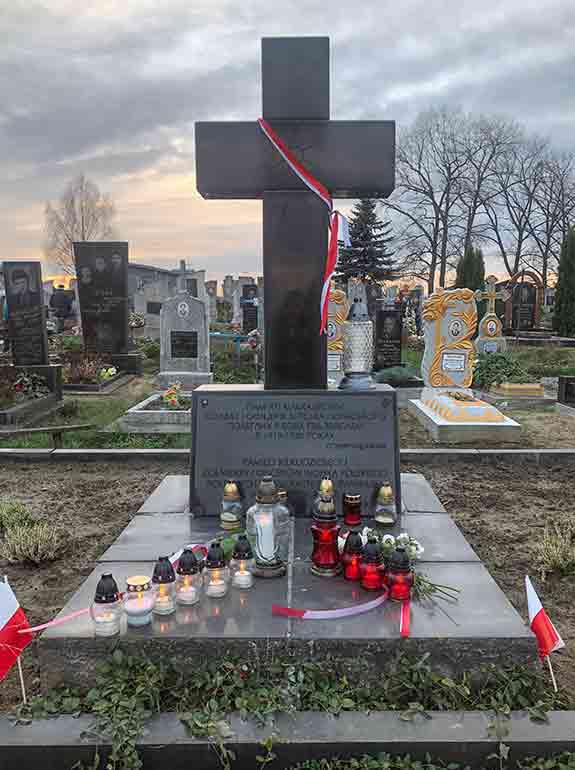
Susły
Korosten
In the old cemetery, Poles lit candles and prayed at the mound by old oaks on November 2. On the 100th anniversary of the march to Korosten, lights were lit in it as a sign of remembrance of those who gave their lives for freedom.
The old cemetery is located near the train station. There is a plaque with an inscription from the 17th century on the mound. Until World War II, the mound was in the Polish sector of the necropolis.
According to the testimony of Wanda Laskowska (a resident of Korosten) and some historians, Polish soldiers are buried in the mounds. Probably, in one of these mounds there may be the grave of an officer of the Polish Army, Wacław Policzkiewicz, who died in the battle at Borodianka and was buried in Korosten.
Susły
Susły, in the Nowogród-Wołyński region, is the site of the battle and the grave of Hallerczyks and Bolsheviks in 1920
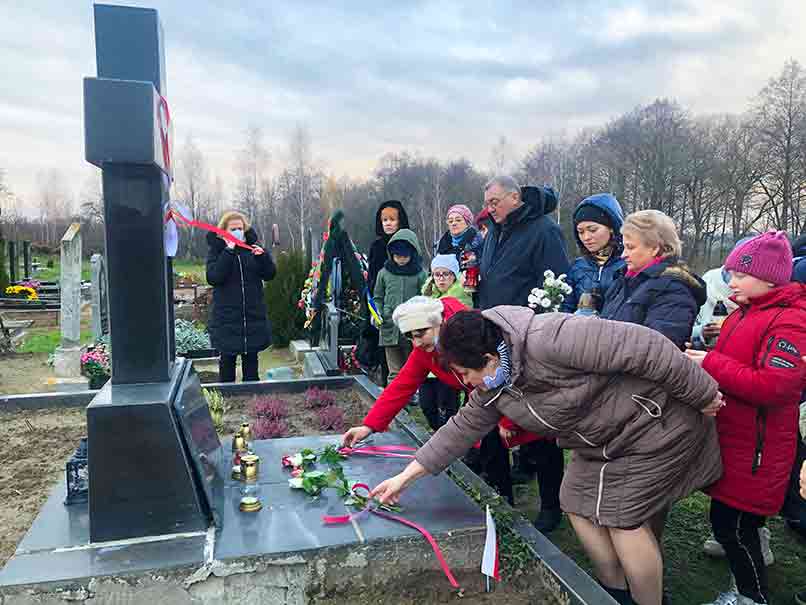
Susły
During the 6th Polish Culture Days, the heroes were commemorated at the mass grave of the soldiers of the Blue Army of General Józef Haller located in the local cemetery, soldiers who died in the battle of 1920, and on the grave at the entrance to the village. Representatives of Polish communities: Ludmiła Walska, Maria Piwowarska, Wiktoria Laskowska-Szczur, laid flowers and lit candles. President of the Jan Stypuła Polish Association, Antonina Szczyrska, described the fights of the Polish Army with the Bolsheviks. The participation of the Polish Army in the fight against the Bolsheviks was the result of, among others, the Polish-Ukrainian alliance agreement signed in April 1920, commonly known as the Piłsudski-Petliura agreement.
On June 27, 1920 in the village of Susły, located 6 km from Nowogród Wołyński (Zwiahel until 1795) in the Zhytomyr Oblast, 1st Company of the 13th The Kaniowski Sappers Regiment, outnumbered, clashed with the cavalry of Budyonny. It took place during the withdrawal of Polish forces from Kiev. The task of the company was to build and defend the crossings on the Słucz River. As a result of the skirmishes, 62 Haller men were killed, and they were buried in an unnamed grave for a long time. Their bodies were desecrated - their uniforms were stripped, cut and left in the fields.
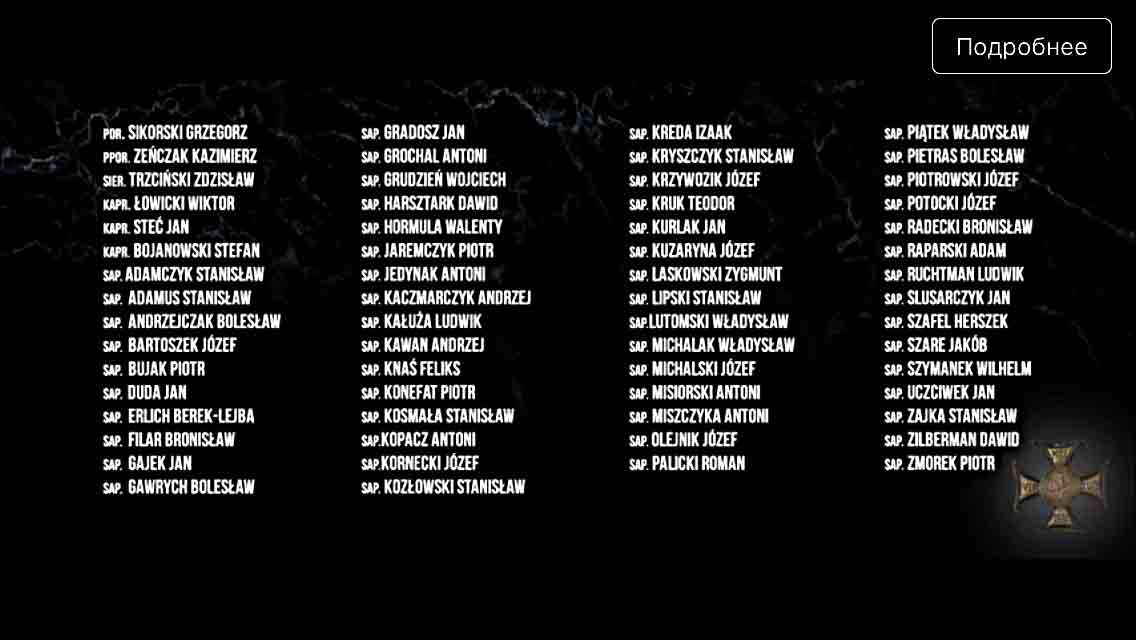
Susły
“The soldiers had beautiful dark blue uniforms, which were chopped up and laid in the fields and ravines. There were 106 bodies. They were transported undercover at night, so that no one could see, the people putting themselves and their loved ones in danger. They buried them in the field, in a common grave,” recalled Jadwiga Jężyjewska, a witness to the fight.
The locals put a wooden cross on the mound. In the 1960s, the mound was torn open, and the remains hidden in it were scattered. The Polish inhabitants of Gophers collected them, which required a lot of courage at that time, and buried them in the local cemetery, and they passed on information about this tragic history from generation to generation.
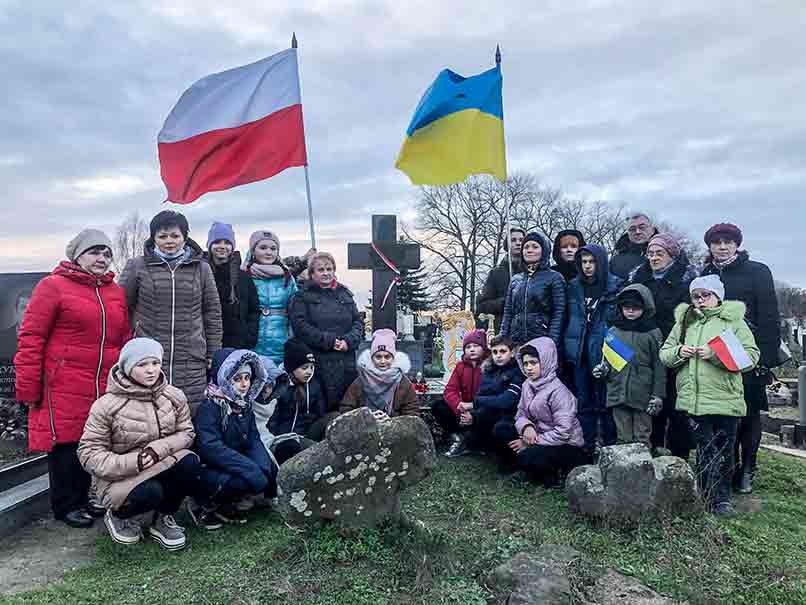
Susły
In 1993, thanks to the efforts of the Member of Parliament of the Republic of Poland, the late Jan Stypuła and the authorities, a black granite cross was erected on the grave. The names of the buried were reconstructed thanks to the work of Hubert Kampa, president of the In Blessed Art foundation.
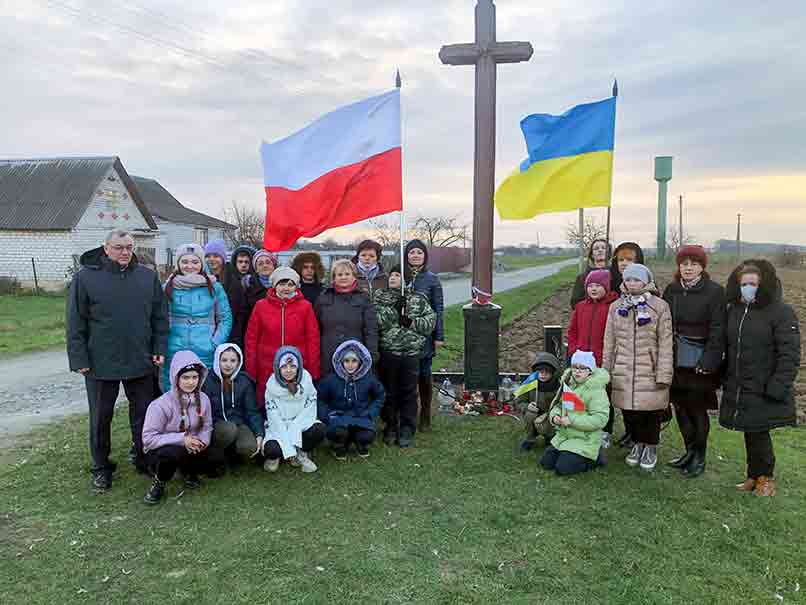
Susły, an uknown officer's grave
Members of the Polish Association of Jan Stypuła in Susły care for the condition of both graves: the one in the cemetery and the one on the edge of the village. They constantly clean them up, and during Polish celebrations, together with young people, they lay flowers and light candles.
Rudnia Baranowska
Information about the grave of Polish soldiers in the village of Rudnia Baranowska (Korostensky region) has been passed down from generation to generation for 80 years. The local Poles knew about its existence, who regularly cleaned it in the first week after Easter. However, little was known about the soldiers resting there. Eugeniusz Jabłoński's book "Wzlot" (The Rise, published in 2004) shed some light on this matter.
In his book, Eugeniusz Jabłoński mentions the village of Rudnia Baranowska in the Żytomierz Province as the burial place of 70-80 Polish soldiers killed during the Polish-Bolshevik war in 1920. The author writes that the soldiers died near the town of Baranówka, and then the locals took their remains to the cemetery in the village Rudnia Baranowska. Later, at the same cemetery, they buried the dead (including Poles) from three neighboring regions: Korostensky, Wołodar-Wołyński and Emilczyński. These events were told about by the local Wojnałowicz family.
The information that in the cemetery in the village of Rudnia Baranowska are the remains of soldiers of the Polish Army, was also confirmed in 2013 by the 92-year-old resident of Korostenia, Zofia Kubelska, who used to live in Rudnia. She stated that, indeed, Polish soldiers were buried in this cemetery, but in the number of 170. She also said that her parents kept a list of fallen soldiers for many years, but due to the difficult times of the Soviet reality, this list was handed over to the Roman Catholic parish in Korosten where, unfortunately, it went missing. According to the woman's message, Polish soldiers were crushed by a Red Army unit under Budyonny's command.
Maria Nowicka, the last inhabitant of the village, informed that the cross on the mass grave had been removed many times by unknown perpetrators. Each time it was set up anew.
Currently, in the cemetery there is a mound on which a wooden cross has been placed. The grave is in a very bad condition, it is overgrown with bushes. On the initiative of the president of the Żytomierz Oblast Union of Poles of Ukraine, Wiktoria Laskowska-Szczur, and the president of the Korosten Municipal Union of Poles of Ukraine, Wanda Laskowska, letters were written to the Provincial Archives in Zhytomyr, analogous archive in Moscow, and the Institute of National Remembrance in Warsaw, asking for any information about those who rested. at the cemetery in the village of Rudnia Baranowska of soldiers and the circumstances of their burials. The Russian archives ignored the request, the Zhytomyr archives did not find any documents about it, but the answer came from the Council for the Protection of Memory of Struggle and Martyrdom in Warsaw.
The Council informed that the battles of Polish troops with Budyonny's troops in the vicinity of the town of Korostenia and the village of Rudnia Baranowska took place in October 1920. The 2nd, 12th and 14th Cavalry Regiments as well as the 2nd Cavalry Regiment took part in them. Unfortunately, the names of commanders of neither Polish nor Bolshevik troops could not be established. The "List of losses of the Polish Army" documenting the personal losses of the Polish-Bolshevik war contains only the name of one soldier who died at Rudnia Baranowska. It was Aleksander Tymoszczuk from the 2nd Lancers Regiment. According to the above-mentioned list, 13 soldiers were killed in the fighting in Korosten.
- From the 2nd Cavalry Regiment: Józef Antonik, Hipolit Borowski, Władysław Czubek, Lucjan Kopański, Jan Pawłowski, Wawrzyniec Zagolski, corporal Bolesław Bogacki, platoon leader Antoni Jarząbkowski, junior officer Wojciech Siemaszko.
- With 12th Regiment of Lancers: Wawrzyniec Ćwikła.
- From the 14th Cavalry Regiment: Lieutenant Czesław Jakubowski.
- From the 2nd Cavalry Regiment: cavalryman Stanisław Antkiewicz, platoon officer Stanisław Felinik.
Probably all these soldiers found their eternal rest in a fraternal grave in the village of Rudnia Baranowska.
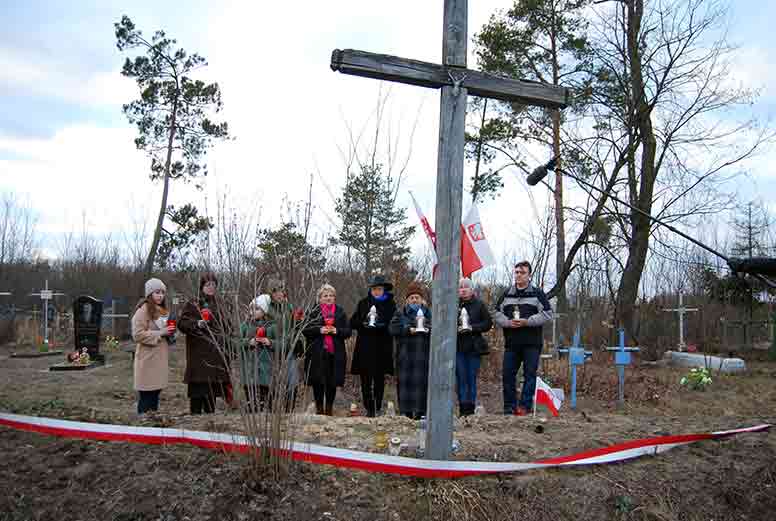
Rudnia Baranowska, 2020
To clarify the data about the soldiers resting in the cemetery in Rudnia Baranowska, Maciej Dancewicz promised to ask the Central Military Archives for access to documents about the above-mentioned battle and those who died there. ŻOZPU made a similar request to the Institute of National Remembrance at the turn of June and July 2013. Unfortunately, no additional information has been received until today. Therefore, it should be assumed that there is no more data on these events in Polish archives.
ŻOZPU consulted on the erection of the monument with Grzegorz Mokrycki, a sightseer known in Ukraine, the president of the Żytomierz District Organization of the Ukrainian Society for the Preservation of Historical and Cultural Monuments. He stated that even the modest information contained in the letter of the Council for the Protection of Memory of Struggle and Martyrdom in Warsaw made it possible to make official efforts to erect a commemorative monument in the cemetery in the village of Rudnia Baranowska.
In the near future, a monument will be built here to commemorate the soldiers who died for our and your freedom.
New Dorohin
A resident of the village, an Orthodox priest, Fr. Iwan Gołub indicated the burial place of Polish cavalry soldiers who died in the battles with Budyonny's troops. According to an account by a history teacher from a local school, Grigorij Ładoszko, the skirmish started with the Polish soldier escaping from a Cossack armed with a saber, and at one point he shot him. A larger group followed the Poles who were in the minority and ran towards the forest. About twenty soldiers died in the fight. The locals, risking their lives, collected the bodies of the dead, wrapped them in sheets and buried them in a mass grave in the cemetery, on which they laid a red granite stone. The memory of these events was passed down among the inhabitants of the village, who knew well who was buried there. It survived the war and the later Soviet years. People have always treated this place with great respect, which was reflected, among other things, in the fact that no one was ever buried in the immediate vicinity of the soldiers' grave.
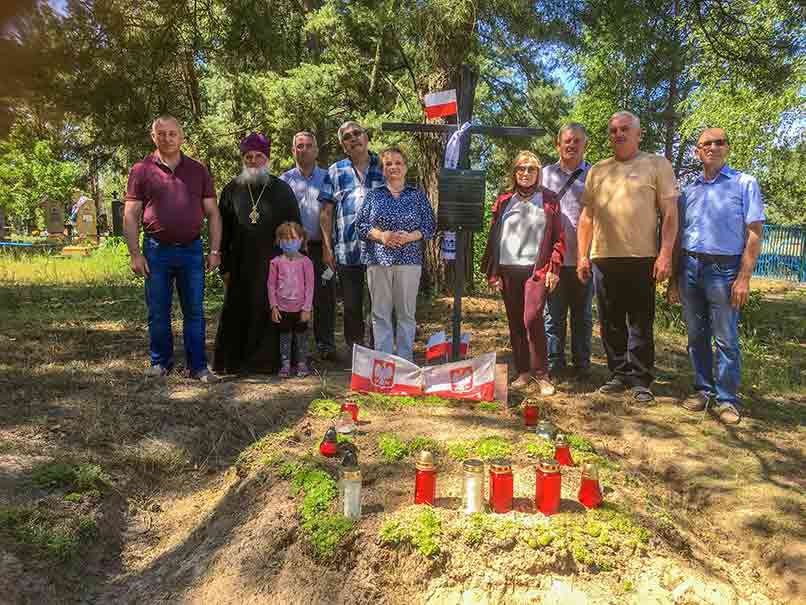
New Dorochin
Thanks to the efforts of the Korosten Union of Poles in Ukraine, a cross was erected at the cemetery in 2019, commemorating the Polish soldiers who died in the Polish-Bolshevik war in 1920. Candles were lit at the grave in 2020, a joint prayer with Fr. Iwan Gołub in Ukrainian and Polish, as a sign of the brotherhood of the Polish and Ukrainian nations, sounded.
We have made efforts to erect memorials. We are aware that this requires considerable financial outlays, especially since the graves are located in abandoned cemeteries in villages away from the main routes. Therefore, through this text, we address all people and organizations who are not indifferent to the memory of the past, with a sincere pledge for help in commemorating Polish soldiers. First of all, we appeal to the Embassy of the Republic of Poland in Kiev, Polish enterprises and Polish organizations. It would be good if this information was also available in different parts of the world. Perhaps our appeal will be answered by the families of the fallen and buried in the cemetery in Rudnia Baranowska, Nowy Dorohin, Susły and Żytomierz.
Rescuing the information about the soldiers of the Polish Army from oblivion and putting their forgotten graves in order is our human and Christian duty towards them and towards future generations.
[1] See: „Lista strat Wojska Polskiego. Polegli i zmarli w wojnach 1918-1920”, Wojskowe Biuro Historyczne, Główna Drukarnia Wojskowa, Warszawa, 1934, page V.




